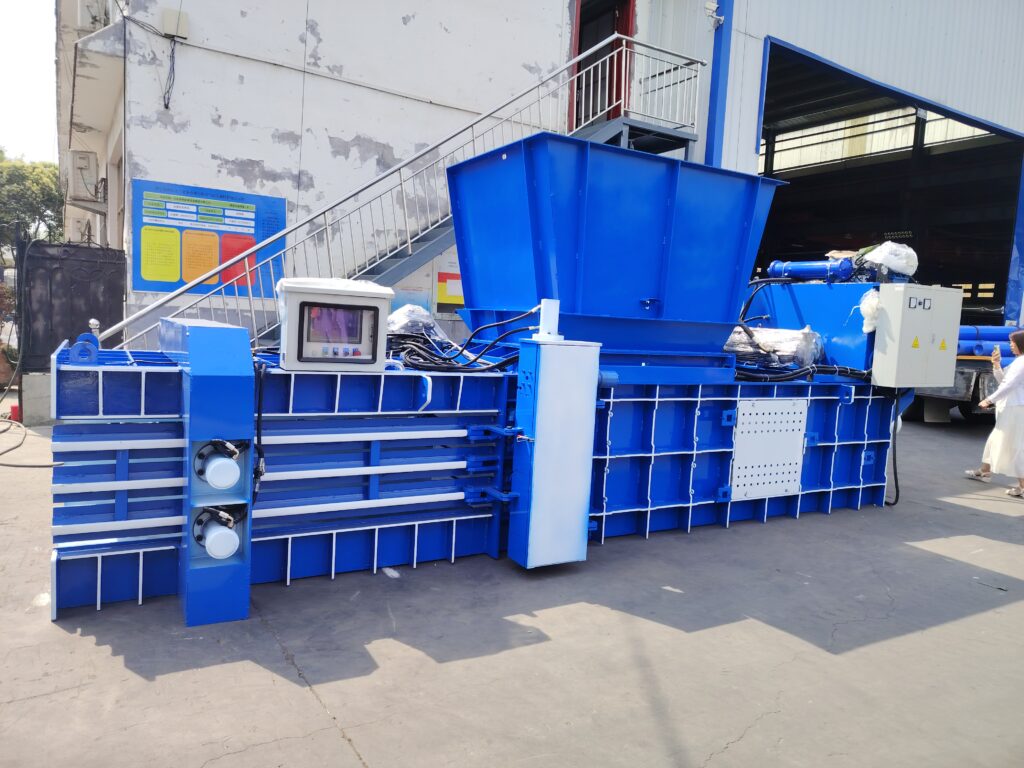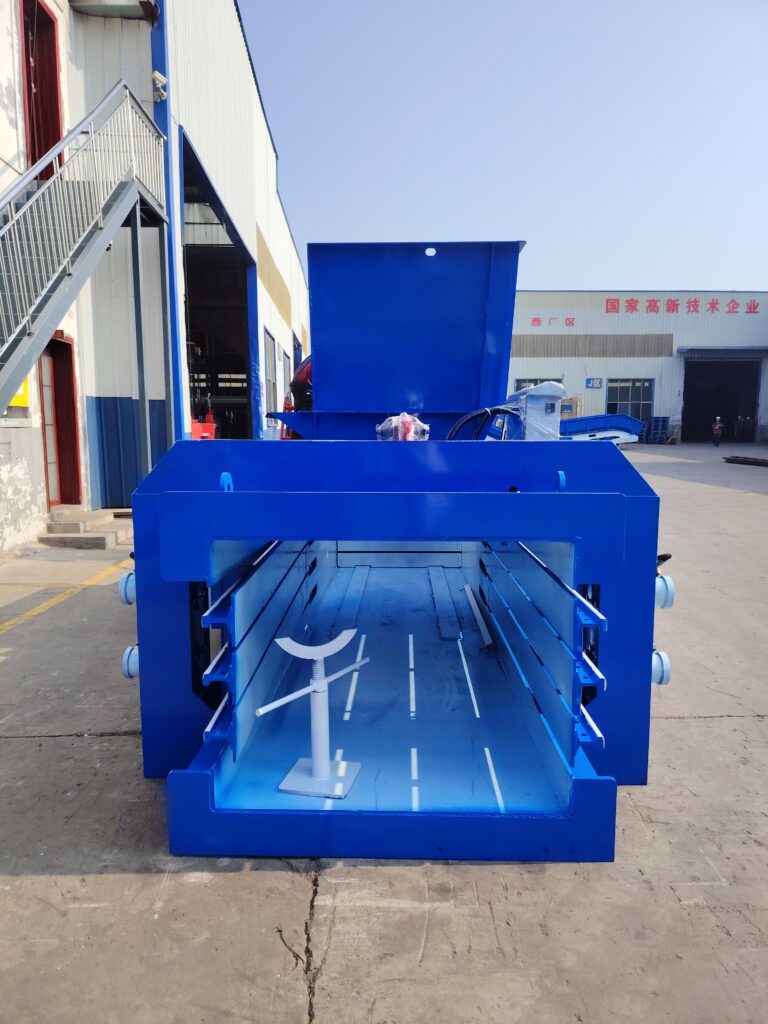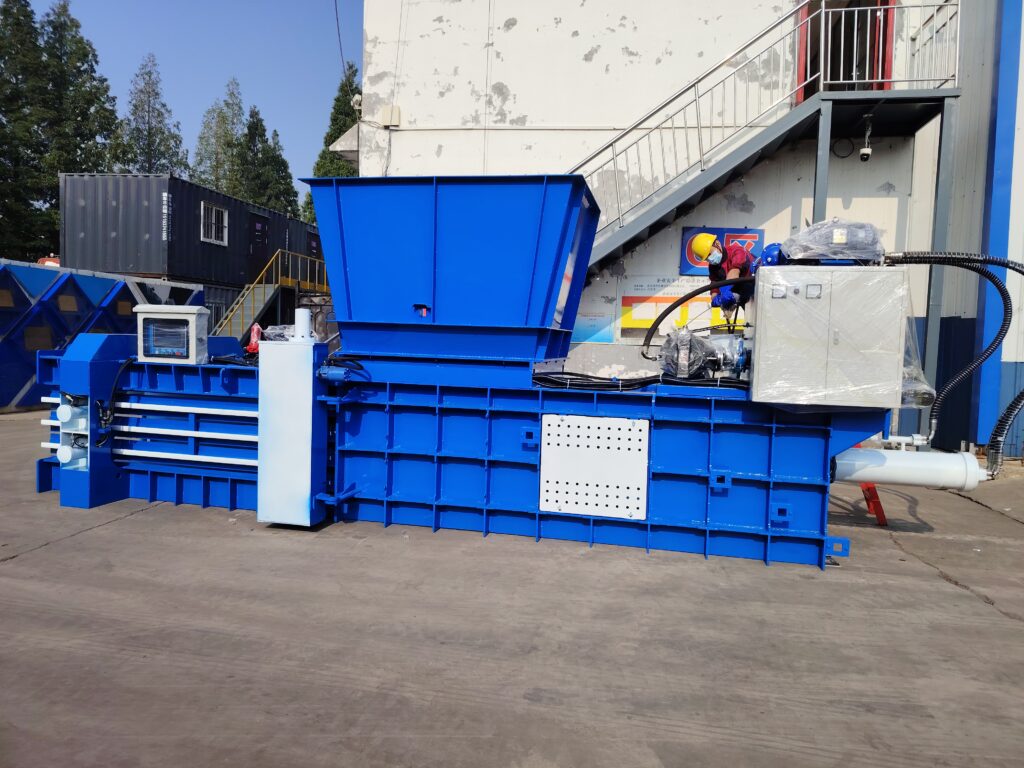What Is A Horizontal Baler

A horizontal baler is an industrial machine designed to compress large amounts of recyclable and waste materials into dense, manageable bales. Unlike vertical balers that press materials from top to bottom, a horizontal baler operates by applying side-to-side pressure using a hydraulic ram. This design allows it to handle higher volumes of waste and work continuously without interruption.
The machine is often equipped with an automatic feeding system, conveyor belts, and tying mechanisms, making it suitable for facilities that generate significant daily waste. Materials such as cardboard, plastic films, PET bottles, textiles, and light metals can all be efficiently compacted.
By reducing bulky waste into compact bales, the horizontal baler saves valuable space, lowers handling costs, and makes recycling logistics more efficient. It is one of the most effective tools available to companies looking to streamline operations and promote sustainability.
Why A Horizontal Baler Is Essential

There are several reasons why businesses choose horizontal balers over other waste management options.
-
Handling Large Volumes
Horizontal balers are designed to process high quantities of waste without frequent stops. This makes them indispensable for warehouses, recycling centers, supermarkets, and manufacturing facilities. -
Cost Savings
By compacting waste into dense bales, businesses reduce transportation costs. Fewer trips are needed to move the same amount of material, which lowers fuel and labor expenses. -
Space Optimization
Loose waste can quickly overwhelm a warehouse or production floor. Compact bales take up far less room, leaving more space for core business activities. -
Environmental Responsibility
Companies today face growing pressure to adopt sustainable practices. A horizontal baler ensures that recyclable materials are managed properly, reducing landfill contributions and supporting circular economy initiatives. -
Labor Efficiency
With semi-automatic or fully automatic functions, the machine requires minimal human effort. Workers can focus on other tasks while the baler continuously processes waste. -
Professional Appearance
Organized, compact bales give recycling centers and warehouses a cleaner, more professional appearance. This improves workplace safety and efficiency.
In short, a horizontal baler is not just a machine; it is a long-term investment that brings financial, operational, and environmental benefits.
How To Use A Horizontal Baler

Operating a horizontal baler is straightforward, especially with modern automated systems. Here is a step-by-step guide:
Step 1 – Preparing The Machine
Before starting, ensure the baler is properly installed, connected to power, and inspected for safety. Check the hydraulic oil level, electrical connections, and emergency stop functions. Operators should always wear protective equipment, including gloves and safety glasses.
Step 2 – Feeding The Material
Waste materials are loaded into the feeding chamber. Depending on the baler type, this can be done manually, with a forklift, or via an automatic conveyor system. It is important to avoid mixing materials that the machine is not designed to handle, such as hazardous waste or oversized metals.
Step 3 – Compressing The Waste
Once the chamber is filled, the hydraulic ram moves horizontally to press the material against a fixed wall. The pressure applied reduces the volume significantly, creating a compact block. This process can be repeated until the chamber reaches the desired bale density.
Step 4 – Tying The Bale
When the bale reaches the correct size, the machine either signals the operator or automatically ties it with strong steel wires or plastic straps. The tying system ensures the bale stays tightly bound during handling and transportation.
Step 5 – Ejecting The Bale
The completed bale is pushed out of the machine. Some balers eject the bale automatically, while others may require manual operation. The finished bale is now ready for storage, stacking, or direct delivery to recycling plants.
Step 6 – Routine Maintenance
To ensure long-term performance, regular maintenance is essential. Operators should clean the machine, lubricate moving parts, check hydraulic systems, and replace worn components as needed. Preventive care extends the life of the baler and ensures safe operation.
Best Practices For Safe And Efficient Operation
-
Operator Training – Staff should be trained on machine operation, safety protocols, and troubleshooting.
-
Consistent Material Feeding – Avoid overloading the machine; feed materials at a steady rate for best results.
-
Monitoring Bale Quality – Check that bales are tied securely and meet size requirements for transportation.
-
Scheduled Inspections – Regularly inspect hydraulics, wiring, and blade conditions to prevent unexpected downtime.
-
Use Appropriate Materials – Always follow the manufacturer’s guidelines on what materials the baler can process.
By following these practices, businesses maximize productivity and minimize risks.
Advanced Features Of Modern Horizontal Balers
Modern horizontal balers come with a variety of advanced features that make them even more efficient and user-friendly. Many machines include automatic feeding conveyors, which continuously supply materials without requiring constant manual input. Some models also have programmable control systems, allowing operators to set bale size, compression pressure, and cycle speed according to specific material types.
Other innovative features include safety interlocks, emergency stop buttons, and hydraulic overload protection, ensuring safe operation even in high-volume industrial environments. With these improvements, horizontal balers not only save labor but also reduce downtime and maintenance costs.
Real-World Applications And Industries
Horizontal balers are widely used across multiple industries. Recycling centers rely on them to process mixed paper, plastics, and light metals efficiently. Retail chains and supermarkets use balers to manage packaging waste. In manufacturing and logistics, horizontal balers help maintain clean production floors by compacting waste, making transportation and storage easier. Even textile recycling companies benefit by compressing fabric scraps into manageable bales.
The versatility of horizontal balers allows businesses to implement sustainable practices while improving operational efficiency. Dense bales are easier to transport, store, and sell to recycling facilities, generating potential revenue from materials that would otherwise be discarded.
Maximizing Efficiency And Sustainability
To get the most from a horizontal baler, businesses should implement regular maintenance schedules, train operators thoroughly, and use the machine within recommended material limits. By combining modern technology with proper handling, companies can turn waste into a valuable resource, save on costs, and significantly reduce their environmental footprint.
With the right horizontal baler, your facility can process more material in less time, improve workplace safety, and contribute to a greener, more sustainable future.
Conclusion – Turning Waste Into Value
A horizontal baler is more than just a piece of machinery. It is a powerful solution that helps businesses transform waste into valuable resources. From reducing operational costs to supporting environmental sustainability, the advantages are clear.
For companies handling large volumes of recyclable materials, investing in a horizontal baler means improving efficiency, saving money, and contributing to a greener future.
At Aultral Machinery, we provide high-quality horizontal balers tailored to your needs. Our machines are designed for durability, ease of use, and outstanding performance. With reliable after-sales support, we ensure that your investment brings long-term value.
